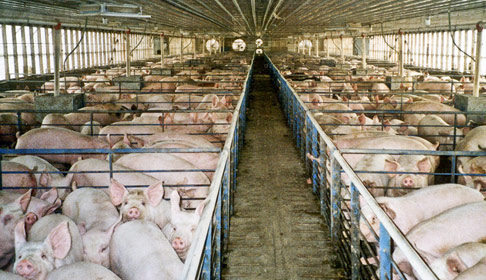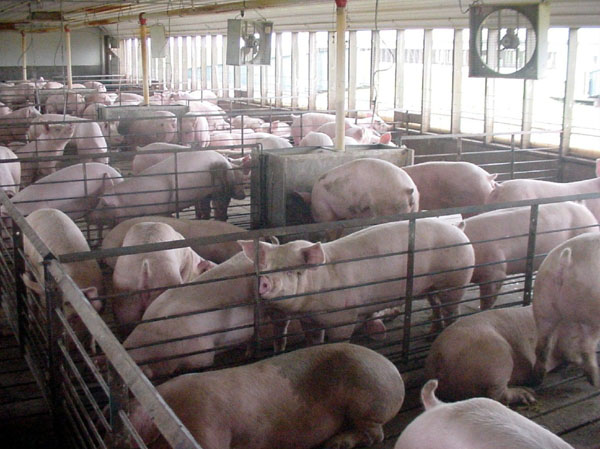HOG WATCH MANITOBA REVIVED FOLLOWING PROPOSED EXPANSION OF HOG INDUSTRY
Winnipeg( April 28, 2017) – HogWatch Manitoba , a group formed in 1999, to monitor the hog industry in Manitoba, is being revived due to public concerns. A steering committee met in Portage La Prairie to make plans for the group’s revival. Alarm has been expressed by many at plans by the Pallister government to lift the moratorium on new hog barns, imposed by the previous NDP government in 2006. They fear the Premier’s plan to reduce red tape will lead to more pollution, threatening our waterways and even human health. And they want the government to clarify certain points – whether, for example, the rules preventing the spreading of manure on fields in the winter – will be done away with. In 2007, the Clean Environment Commission found that nutrients from hog waste and spread on fields “constitute the most serious environmental sustainability issues facing the industry.” Hogwatch wants the government to explain what has changed since then that would lead it to its present actions. Hogwatch will ask for meetings with cabinet ministers most directly involved and seek assurances that regulations sufficient to safeguard the public and the environment will not be done away with.

CONTROVERSY OVER PHOSPHORUS IN HOG MANURE
One of the most serious environmental concerns of the industrialized hog industry is the threat to water quality due to phosphorus from manure running off the fields once it has been applied as fertilizer. The industry argues, with the support of Don Flaten a soil scientist from the University of Manitoba, that the hog industry contributes only 1 % of the phosphorus to Lake Winnipeg. However Hog Watch Manitoba believes that there is a much greater amount of phosphorus getting into the streams and creeks that ultimately flow into the Red River and Lake Winnipeg, feeding the sometimes toxic blue-green algae that is threatening the lake. The amount of phosphorus getting into Lake Winnipeg more than doubled in the 1990s around the time that the number of pigs raised in Manitoba quadrupled.

HOG BARN FIRES
Another hog barn fire in Manitoba prompted ( Wpg Free Press article) Hog Watch Manitoba to call for improvements to barn construction to include basic fire prevention measures like sprinkler systems, firewalls , etc. Since 2007, in just one decade there have been 64,063 pigs killed in barn fires. And HWM fears that plans by the Pallister government to remove what it calls “impractical and costly” fire prevention regulations in barn construction, will only make a bad situation even worse. How can these changes make the situation better?
“Although the thousands of pigs that have died in barn fires are not someone’s pet, they are all sentient beings that have the capacity to suffer fear and pain” says Vicki Burns of HWM. “If there were horrific fires like this in animal shelters like humane societies, the public would not tolerate it. We should not be tolerating this for any animal housing, whether they are cats and dogs or animals raised for agricultural production. The degree of pain experienced in a fatal fire will be excruciating for any animals”.
Janine Gibson, an organic inspector and member of HWM, says “ These barn fires do not need to happen . We have the means to provide good fire prevention in our barns, just as we do in other buildings. Let’s make this happen to offer more humane circumstances for all animals”.
